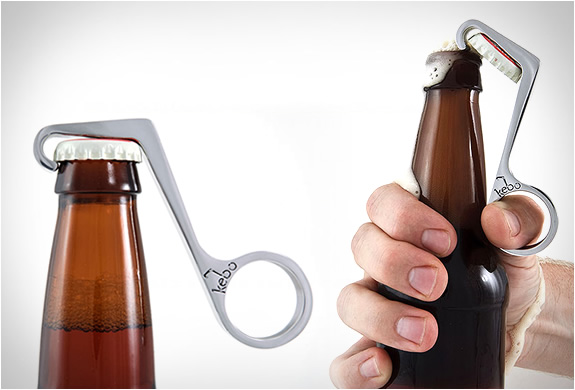Ambition-driven startups spend too much time and resources thinking about the functionality of their product. Many skip the step of validating their idea for a startup business. Why? The reasons for this fatal step vary from being too ambitious and in love with the idea of thinking that testing the hypothesis is expensive. But not testing the waters comes at a higher price: 42% of startups die because the market doesn’t need their product.
The harsh reality makes it vitally important to check the market need for your intended product as soon as possible. Discover the ten steps you can take to test the viability of your startup business idea without having to build a thing.
1. Define the One Problem Your Product Solves

Many startup owners fall blindly in love with their idea. They push their luck by ignoring or not even bothering to ask for feedback from the target audience. Thinking “If I like or need this product, it means that others will do too” is a slippery slope. These owners spend too much time and resources on the “nice-to-have” features, fantasizing about how users will interact with their product. But after the release, they’re desperate to understand why the product gains zero traction.
The first step of startup idea validation is defining the real problem your product solves. The “sounds good” and “nice to have” approaches don’t work. Your product should offer a solution to a real problem the target audience has. So, get out there and ask the real potential users (and not just your family and friends) to evaluate your idea objectively.
The only way to check if the problem is real, and if the target customers are willing to pay for its solution is to reach out to them. Fake door testing is one of the strategies you can use. Create a marketing page, an ad, a button, or other assets advertising a product you are about to build. But bear in mind that startups need 2-3 times longer to validate their market than most founders expect.
2. Define How Your Product Solves the Problem

After you make sure that your intended product addresses a real issue, define how it solves the problem correctly. Get the full picture of how the product will make the lives of your target users better, more comfortable, more productive, etc. Your solution should be as straightforward and quick as possible.
Try answering questions like how will people use your product? In what situations? Does your product solve a problem better or faster than other available solutions? Do people know about the problem they have? Center your startup ideas around the solution and draw your functionality from there.
Also, be aware that the problem your product is built to solve may not even exist. In that case, it’s time to give up on further product validation and move to something else. Yes, it may feel devastating, but don’t try to trick people into solving a problem they do not have. Cheating is never a good business strategy.
Read how to build a custom nurse scheduling software solution.
3. Estimate the Size of Your Market

Your next step is market validation. What is the demand for the product? Is the market big enough? Even if you come up with an excellent solution for a pressing problem, the number of people facing it might turn out to be too small. Estimating your market size before you develop anything is crucial to understand how scalable your product should be, what investments you can get, and how much potential your product has.
Keep in mind that startups that haven’t raised money yet tend to overestimate their market size. To make sure you haven’t fallen in that trap, get more information on how to define the market size of your product in this blog post.
A concierge MVP is an excellent way to test how many people are likely to use your product, how often, and how much they are willing to pay for it. It is an exciting notion: a concierge MVP means that a person provides the services that the future product will offer. With the concierge MVP approach, you don’t have to build a thing to get valuable feedback about your service.
Read how to develop an assisted living software solution.
4. Study Your Competition

Surprisingly enough, 19% of startups fail because they ignore the competition. Looking out for rivals must be a natural thing to do before you decide to enter a market.
Study your competition to find out everything about the drawbacks of their products and what discourages customers from using them. Also, pay attention to the gaps they have and cover or improve them in your product. Researching the business strategy and the best practices of your most successful competitors is another useful idea. It will help you understand how to build your strategy well.
Learn from the mistakes of others in your sector. Perhaps, the product you have an idea for is not there for a reason. For example:
-
The market might not be ready.
-
There could be some legal issues connected with the idea or its implementation.
-
There’s a major player on the market a startup cannot compete with.
-
A successful company has already raised a lot of money for the same product you have in mind.
Learning about your competitors is nothing to be ashamed of. It’s not spying; it’s called competitor analysis. Besides, according to statistics, founders who learn are more successful.
5. Define the ICP of Your Customers

The next step is defining your ICP, an ideal customer profile. In a nutshell, an ICP is a type of customer you want to focus on acquiring. The notion of ICP combines aspects like product use, geographical, behavioral, demographic, and sociographic characteristics. To create an ICP, you need to determine how you will offer value to the target customers and how they can respond to it.
Define the demographics, personality, marketing, and sales criteria of your ideal customers and write them down in a table. You can find an example of the table below. Having a complete ICP, you won’t have to sit around waiting for leads. Based on the well-studied personas, you will know where and how to find precisely the clients you need.
The more you know about your ideal customers, the better you can tailor your products and services to their needs. We've enlisted the criteria you can evaluate your buyer personas against and organized them into a neat table. You can click here to get a PDF version you can instantly print out. The criteria include your personas' demographics (name, age, job title), personality traits (goals, motivation, challenges), and marketing & sales information (channels, information sources, satisfaction criteria). Once you fill it in nicely, you will always know how to customize your services in the best way.
6. Describe Your Ideas

Now, it’s time to prepare a description of your product. Based on the research you performed, define its key features. What do they look like? How can you use them to test your main hypothesis?
As you get down to describing your product, do not turn the description into a novel. Skip any unnecessary details that can puzzle your potential investors and the development team. Express your ideas succinctly but write in full, exact terms. If something seems ambiguous in your description, it can cause trouble when the development starts.
It’s a good idea to put off your product description for a bit and get back to it later. Re-read it to make sure there are no gaps or bias ideas in it. Let others read your description, ideally not your friends but your target customers. After all, they will be the ones using your product when it’s ready.
7. Wireframe Your Ideas

Wireframes allow you to define the basic structure of the product you have in mind and depict the hierarchy of the user interface. They will show the general layout of your product, its navigation, ways of data visualization, buttons, and critical interactions. Usually, drafting wireframes does not require a lot of time and resources, whereas creating a detailed visual design does.
Some startup founders skip the wireframing stage to get to the product launch sooner. But you know what they say: haste makes waste. So, before you build anything, make sure to verify it with the wireframes and design. Learn how design can help you validate a startup idea before you create an MVP from our article.
8. Develop a Monetization Model

Now, it’s time to think about monetizing your solution. You have to know precisely how you are going to make money with your product before you start building it.
Don’t be tricked into thinking that if you make a well-polished innovative product, customers will start begging you to take their money. In today’s competitive environment, it’s almost impossible for your target audience to stumble upon your product by chance. That is why you have to know your revenue sources.
Read also: Strategies To Overcome Revenue Challenges in Healthcare
Consider using ad-based or affiliate revenue models for your product. And if they don’t work for you, there are many more monetization models out there.
Read how to build homecare business management software.
9. Test Your Ideas

One of the final steps in product validation is testing your ideas. Think if you know someone who could be your target customer and talk over the ideas with them. Remember that nine of the top twenty reasons for startup failures are customer-related. Not taking into account your customer needs, ignoring them, and focusing on what you think is right is a recipe for failure.
Let us give you a couple of tips on discussing your idea with potential customers:
-
Define the sample size of your potential customers’ population to estimate the number of people who face a problem your product solves.
-
Hold interviews to find out if people ever faced a problem you intend to solve.
-
Ask them if they are interested in the product you offer.
-
Inquire whether they identify themselves with your ICP.
10. Make a Pivot if Data Suggests You Should

Sometimes, after you test your ideas thoroughly, you will find that you were on the right track all along. Don’t let it make you regret the time spent on research and testing. You didn’t spend it; you invested it in your confidence.
But there are situations when the research shows you need to make a pivot if you want the product to succeed. You know it’s time to head in a new direction if your product:
-
does not solve a customer problem
-
has a strategy that does not work
-
does not attract your target customers
-
costs more to develop than it can bring in revenue
-
does not encourage your customers to pay for the solution you offer.
And while you’re standing at the crossroads, mind that about 10% of startups fail because their pivot went wrong. So, before you dive into making it, evaluate the full potential of your idea. Consider other possible applications and sectors except for the target one to see what direction is better to head in next.
Final Thoughts
Tons of digital products enter the market all the time and it's very crucial to validate startup idea. And still, users don’t rush to engage with and pay a subscription for every new digital solution that pops up. Often, well-established products take up the lion's share of the market, making the users reluctant to try something new. For instance, smartphone users engage with less than ten applications regularly, even though there are millions of apps in the App Store and Google Play.
To make sure that your product has a chance to survive before spending time and resources on it, define the problem your solution solves, estimate your market, study the competition, know your ideal client, wireframe, and test your idea. If the research prompts you to do so, make a pivot. And don’t forget to subscribe to our blog to get the latest articles on building a successful startup.




